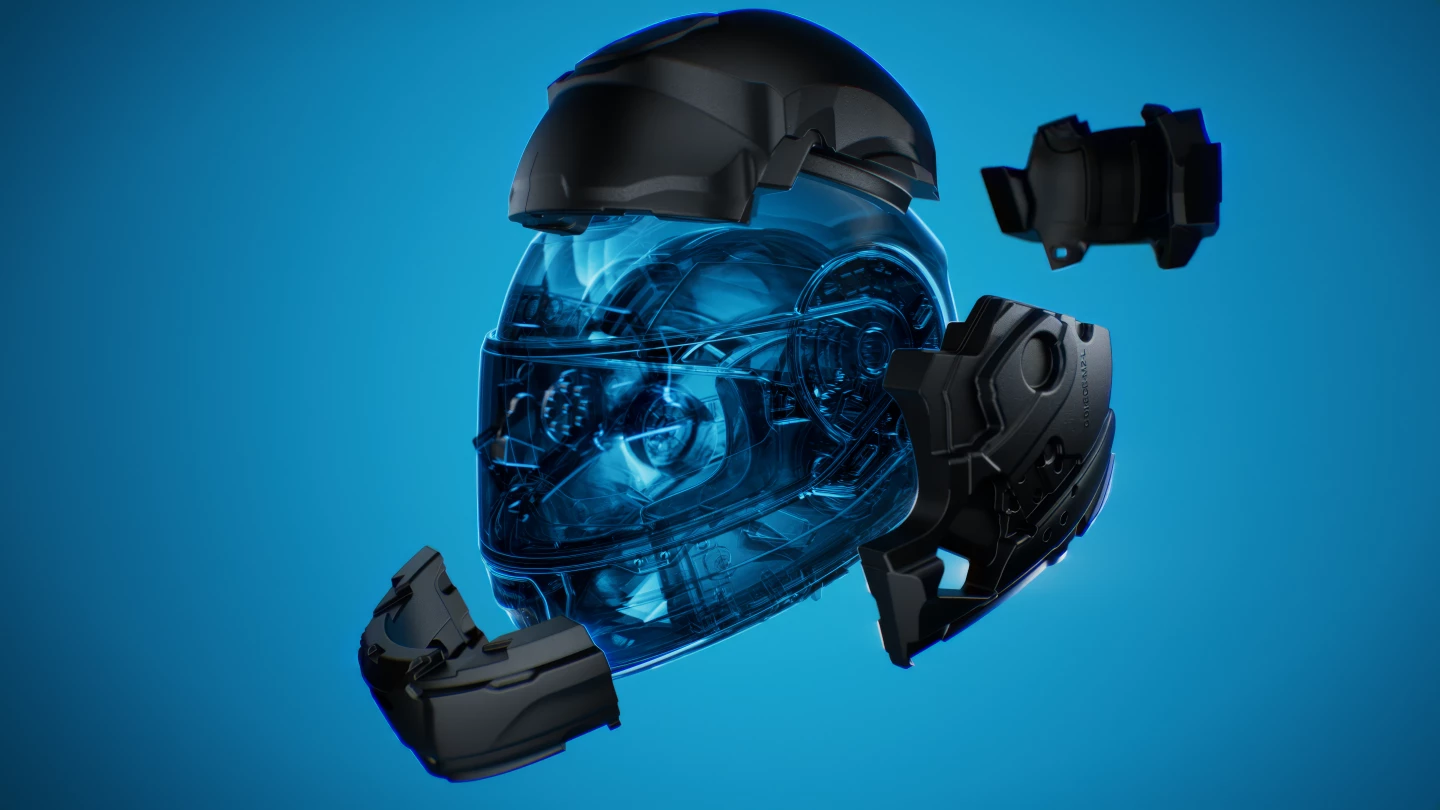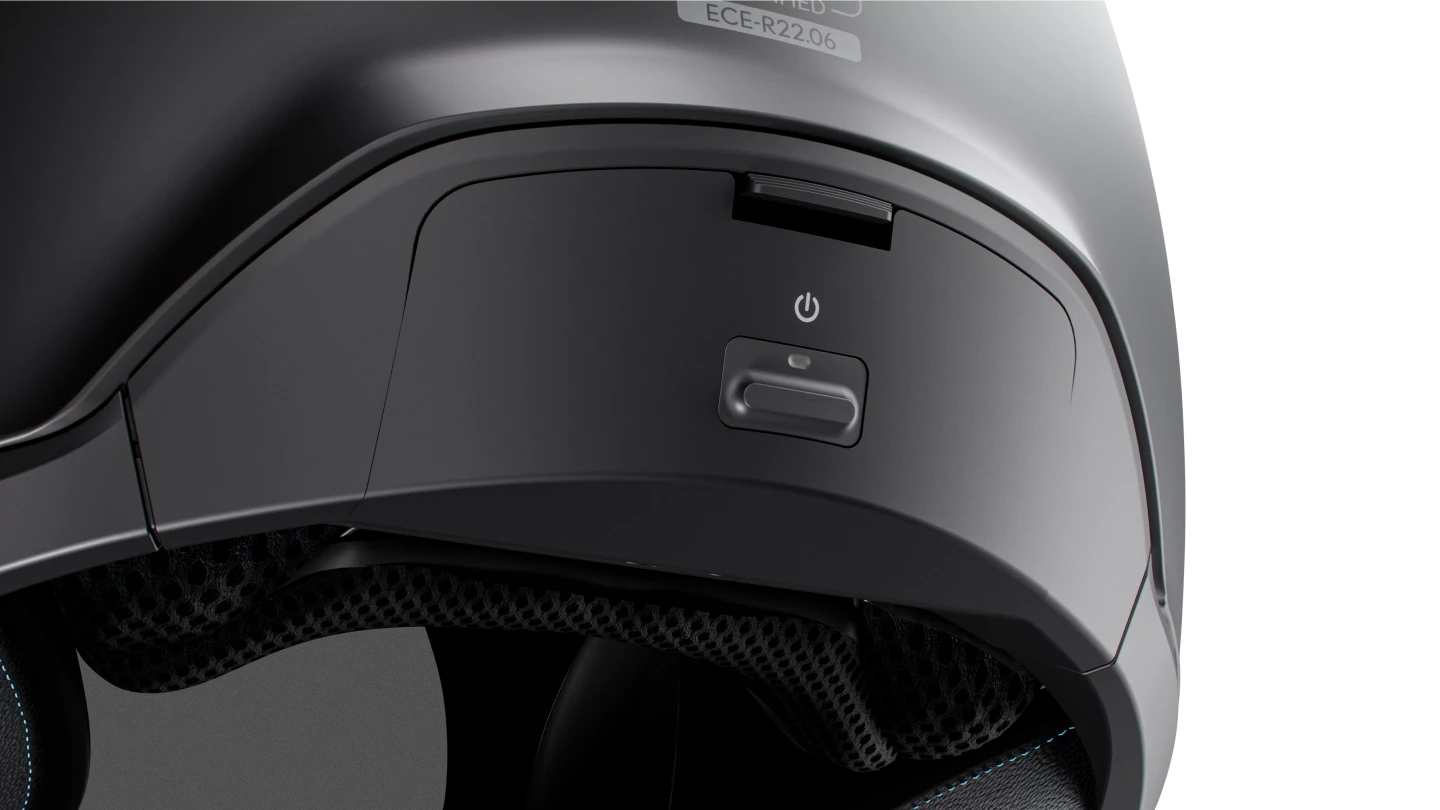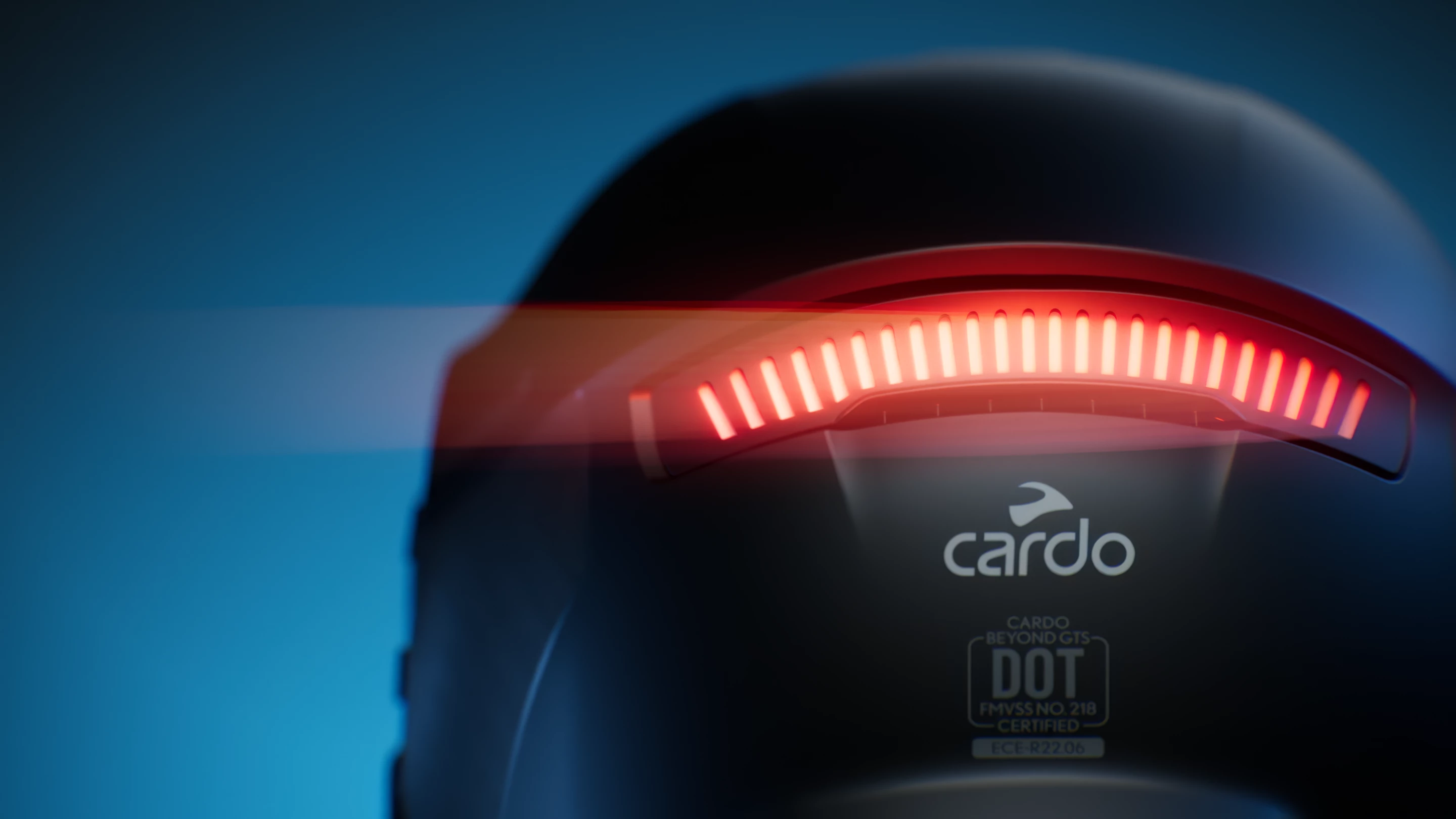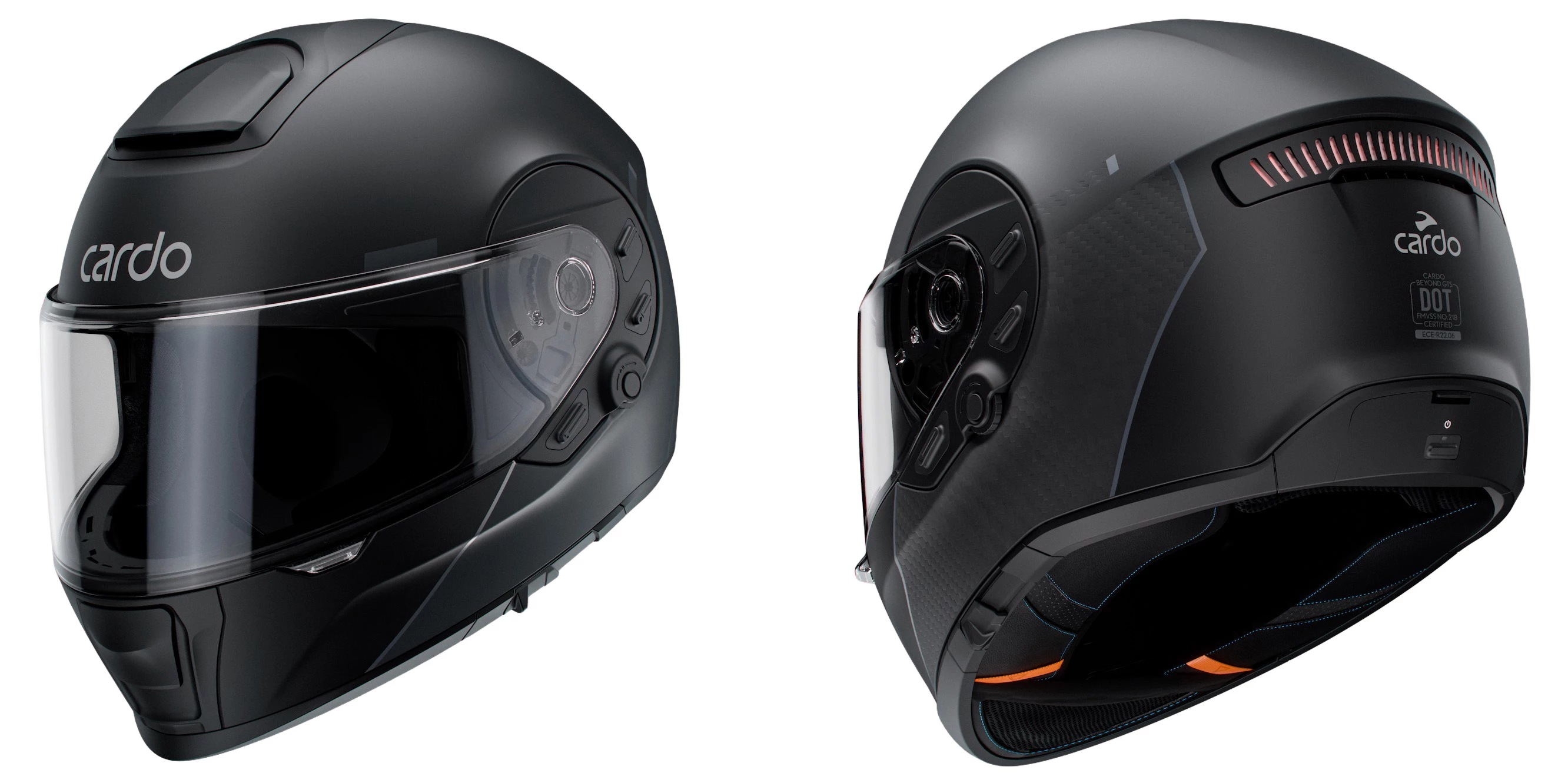The new Cardo Beyond isn’t just another Bluetooth add-on; it’s the company’s first fully integrated helmet with its acclaimed comms tech baked right into the shell.
But it’s not just for comms, Cardo has included a host of features, including active noise cancellation, damage sensors, and a rear brake light. There are two models you can choose from: Beyond GTS and Beyond GT.
These helmets are the culmination of two decades of making communication technology and four years of dedicated helmet R&D, combining safety, audio, and connectivity in a single package. "We've always believed technology should enhance the ride without distracting from it, and that's exactly what we've achieved with this helmet," said Alon Lumbroso, Chief Executive Officer at Cardo. "It's not just about adding features. It's about integrating them in a way that is seamless and feels natural, intuitive, and purpose-built for motorcyclists."

Starting with the flagship offering, the Beyond GTS. This helmet is based around a lightweight carbon fiber shell with a multi-density expanded polystyrene (EPS) liner that provides high-impact protection without adding unnecessary weight.
Since these helmets are aimed at riders spending long hours touring on tarmac, Cardo has paid special attention to airflow and stability, thanks to rigorous wind tunnel testing and a precision ventilation system that minimizes fatigue and maintains visibility in all weather conditions.
Inside, the GTS gets 53-mm helmet speakers calibrated alongside active noise cancellation (ANC) with Cardo's Dynamic Mesh Communication (DMC) suite, which allows you to communicate over a 2-km (1.24-mile) range. The new speakers use embedded microphones to block out dangerous frequencies while allowing ambient noises through for safety.
Cardo has also placed a helmet health indicator that monitors shell integrity and notifies you when the helmet may no longer be fit to be worn. "After a certain cumulating threshold is passed, the system will recommend having the helmet checked for integrity or replaced," revealed the company.

Safety features continue with an Emergency Release System, integrated crash detection, and an active brake light to alert traffic behind. The helmet also comes pre-fitted with a Pinlock 200 anti-fog lens that improves visibility. The list goes on, with even relatively minor things like wireless charging, an auto on/off option, and moisture-wicking lining on offer to make long rides more comfortable.
The Beyond GT is the more affordable of the two trims, sacrificing some of the premium materials while maintaining the same design philosophy. It also gets a lightweight shell – this one made of fiberglass – with a bright rear reflector.
It also comes with ANC and Bluetooth connectivity. Unlike the GTS, it does not support wireless charging, but for the most part, it provides similar comfort thanks to plush cushioning and a Pinlock 120XLT lens as standard.

There’s one common complaint with smart helmets: the inconvenience of having to plug the entire thing in to charge every single time. The fact that both the GT and GTS come with a detachable battery (1,000-mAh for the GT and 2,000-mAh for the GTS) that can be pulled out for charging is a very appealing setup for those with tight spaces.
Both helmets get integrated sun visors, while being full multi-regional homologated (DOT and ECE 22.06 certified). Weight is listed at 1,875 grams (4+ lb), which is not very heavy. It's lighter than high-end sports-touring helmets without an intercom system, but heavier (by 125 grams) than a Shoei Neotec 3 that’s equipped with a Sena SRL3 intercom.
Both helmets will be available toward the middle of 2026, with the GTS priced at US$1,199/€1,199 and the GT at $949/€949. Compare that cost to the aforementioned Shoei Neotec 3’s MSRP of $949.99, with the additional cost of a $359 Sena SRL3, and you’re looking at a clear winner. But if you were just chasing better value, Sena’s Phantom smart helmet, released earlier this year, is at least $449 cheaper.

We’ve seen quite a few ‘smart’ helmets pop up lately, from the Zyon's smart helmet to the iC-R helmet that comes with a 240-degree field of vision. Some are borderline ingenious, while others seem more like marketing gimmicks.
Cardo’s Beyond range appears to be functional enough for widespread adoption and affordable enough to be widely accepted. And it's from one of the best-known manufacturers of wireless communications systems in the world.
To go from intercom devices to full-blown helmets may sound like a natural progression, but it is one of the hardest things to do. The only thing that remains to be seen is whether motorcyclists adopt these helmets.
Source: Cardo
New Atlas may receive commission if you purchase through our Amazon links









